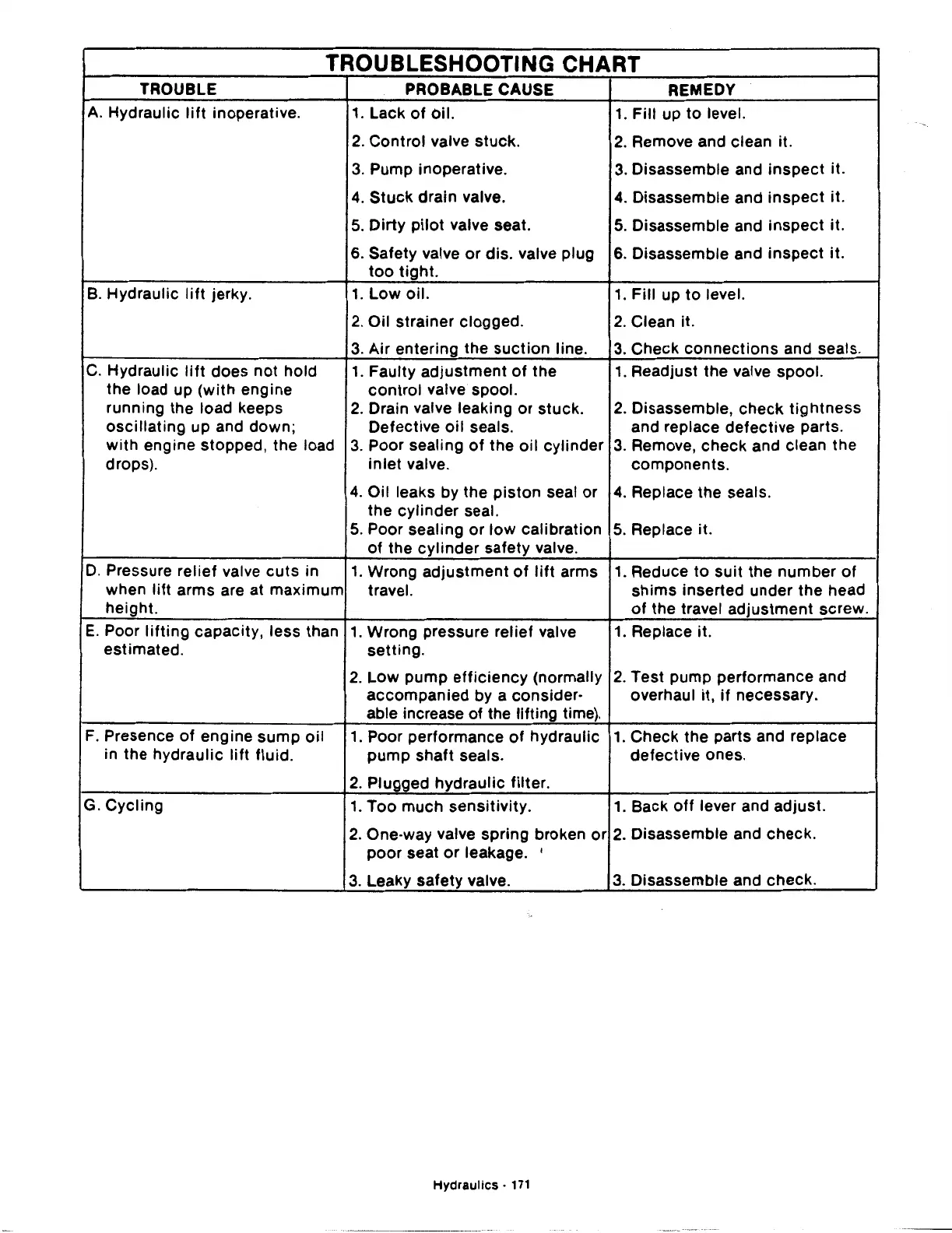TROUBLESHOOTING CHART
TROUBLE
PROBABLE CAUSE
REMEDY
A.
Hydraulic
lift
inoperative.
1.
Lack
of
Oil.
1.
Fill
up
to
level.
2.
Control valve stuck.
2.
Remove and clean it.
3.
Pump inoperative.
3.
Disassemble and
inspect
it.
4.
Stuck
drain valve.
4.
Disassemble and
inspect
it.
5.
Dirty
pilot
valve seat.
5.
Disassemble and
inspect
it.
6. Safety valve
or
dis. valve plug
6.
Disassemble and
inspect
it.
too
tight.
B.
Hydraulic
lift
jerky.
1.
Low
oil.
1.
Fill
up
to
level.
2.
Oil strainer clogged.
2.
Clean it.
3.
Air
entering the
suction
line.
3.
Check
connections
and seals.
C.
Hydraulic
lift
does
not
hold
1.
Faulty adjustment
of
the
1.
Readjust the valve spool.
the load up (with engine
control
valve spool.
running the load keeps
2.
Drain valve leaking
or
stuck.
2.
Disassemble, check
tightness
oscillating
up and down;
Defective
oil
seals. and replace defective parts.
with
engine stopped, the load
3.
Poor sealing
of
the
oil
cylinder
3.
Remove,
check
and clean the
drops).
inlet
valve. components.
4.
Oil leaks by the
piston
seal or
4.
Replace the seals.
the cylinder seal.
5.
Poor sealing
or
low
calibration
5.
Replace it.
of
the
cylinder
safety valve.
D.
Pressure relief valve
cuts
in
1.
Wrong
adjustment
of
lift
arms
1.
Reduce
to
suit
the
number
of
when
lift
arms are at maximum
travel.
shims
inserted under the head
height.
of
the travel
adjustment
screw.
E.
Poor
lifting
capacity, less than
1.
Wrong pressure relief valve
1.
Replace it.
estimated.
setting.
2.
Low
pump
efficiency
(normally
2.
Test pump performance and
accompanied by a consider·
overhaul it,
if
necessary.
able increase
of
the lifting time).
F.
Presence
of
engine
sump
oil
1.
Poor performance
of
hydraulic
1.
Check the parts and replace
in the hydraulic
lift
fluid.
pump
shaft seals. defective ones.
2.
Plugged hydraulic filter.
G. Cycling
1.
Too much sensitivity.
1.
Back
off
lever and adjust.
2.
One-way valve spring broken
or
2.
Disassemble and check.
poor
seat
or
leakage.
I
3.
Leaky safety valve.
3.
Disassemble and check.
Hydraulics
·
171
